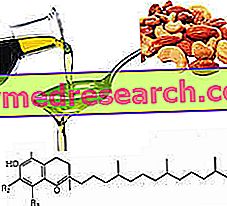During a real fight, many skills are needed to survive. Among these we remember, first of all, a good fighting technique, thanks to which it will be possible to develop effective blows with the right energy saving. In addition to technique, athletic qualities such as strength, endurance and speed are also needed, known in theory of movement and training as conditional abilities.
Now, resistance can be defined as "the ability to be able to maintain a given performance (a given return) for as long as possible (Martin, Carl, Lehnertz, 2004)".
What is resistance used for in a real fight?
Fights, almost never one on one, generally do not last long enough to require special resistance training. Imagining, in fact, ideally, a duel between two fighters who face each other without rules, the clash would not last more than a few moments, given the power of some shots that can be unleashed in the absence of regulation (knees, elbows, heads, fingers in the eyes, kicks to the genitals, bites etc.).

Resistance training is based on the possibility of producing, through particular physical stresses, some adaptations of the mechanisms of the human organism aimed at the production of metabolic energy. The most widely used molecule for energy production is ATP (adenosine triphosphate), but there is also GTP (guanosine triphosphate): following the detachment of a phosphate from the previous molecules, with production of ADP (adenosine diphosphate) or GDP ( guanosin diphosphate) depending on the case, energy can be obtained.
Let us now see what are the mechanisms through which this effect can be obtained: there are three in all, one of which is aerobic and two are anaerobic, the anaerobic lactate and the anaerobic alactacid. The first, as the word "aerobic" suggests, requires the consumption of oxygen for energy production, while the other two do not use oxygen to produce energy. In the anaerobic lactacid mechanism, in addition to energy production, we also end up producing lactate (or lactic acid) at the level of the contracting muscle district, which, although it may minimally positively influence the ability to resist stress, influence, in other respects, much more negatively1. Finally, the anaerobic alactacid does not imply the production of lactate, but the production of a non-toxic but useless metabolite: creatinine.
Now let's see in more detail what these mechanisms consist of. The aerobic mechanism is nothing but a combustion reaction in which the fuel is hydrogen and the comburent is oxygen. Oxygen is extracted from the surrounding air through pulmonary respiration (then, via blood, it reaches the district where it is needed for energy production). Hydrogen instead is extracted from foods, which, by definition, consist of carbohydrates (also called sugars or carbohydrates), fats (or lipids) and proteins (or proteins). Now, as far as proteins are concerned, they cooperate, under physiological conditions, only minimally in the supply of hydrogen for the production of metabolic energy. Largely, they are used for this purpose only when the other two sources are missing.
As for carbohydrates, the only sugar from which hydrogen can be extracted is glucose, a simple sugar that is either circulating in the blood or found inside the muscles and liver in the form of glycogen, a glucose reserve that is mobilized in the event of an occurrence (the glycogen that is found in the liver splits into glucose that is released into the circulation in a circle in order to allow it to reach the district in which it needs it. The muscle instead uses it exclusively for himself in case he needed it). All other sugars, before they can be used for energy production, must necessarily be transformed into glucose first. From the glucose, through a complex sequence of chemical reactions called glycolysis, a chemical structure is obtained whose name is pyruvate (or pyruvic acid). From glycogen, through another chemical process known as glycogenolysis, it is possible to derive a molecule called glucose-6-phosphate, which is an intermediate product of glycolysis. Then, pyruvate is obtained from glucose-6-phosphate, following the same process as glycolysis. At this point, the pyruvate is used for the production of another molecule, known as acetylCoA (acetyl coenzyme A), which takes part in another complex series of chemical reactions known as the citric acid cycle or the Krebs cycle, whose final objective is, precisely, to produce the metabolic energy.
Now let's see how hydrogen is extracted from lipids: lipids follow a different path than glucides. This route, as well as another sequence of chemical reactions, is called b-oxidation (beta oxidation). The lipids from which energy is obtained are triglycerides (or triacylglycerols). AcetylCoA is directly derived from b-oxidation, which can enter the citric acid cycle. But what is the Krebs cycle? The Krebs cycle is a sequence of chemical reactions whose purpose is to produce controlled combustion (if in fact the combustion process were not controlled, the energy that would be produced would be such as to damage the cell within which the reaction takes place ): the hydrogen, the fuel, is sold, gradually, to more and more similar acceptors until it reaches the oxygen, the comburent. In particular, the role of some hydrogen transporter molecules stands out: NAD (nicotinamide adenine dinucleotide) and FAD (flavin adenin dinucleotide). Once the hydrogen reaches the oxygen, the combustion reaction can take place. In addition to metabolic energy, a molecule of carbon dioxide (CO 2 ) and a water molecule (H 2 O) are also produced for each cycle.
Let's talk about the lactic acid anaerobic mechanism. This is activated if there is not enough oxygen available to allow all the hydrogen present on the conveyors to be discharged. In this case NADH and FADH2 accumulate, ie NAD and FAD in their reduced form, with bound hydrogen, which blocks glycolysis, the Krebs cycle and b-oxidation. It is a situation that can occur for various reasons, but essentially speaking of a physiological condition, it occurs when the muscle is required to have too intense and prolonged effort for the aerobic mechanism to be able to provide sufficient oxygen.
It is here that the concept of anaerobic Threshold comes into play: the anaerobic Threshold is that work intensity to which a quantity of lactate is produced and accumulated such that at a blood level it reaches the quantity of 4mM during tests of progressively increasing intensity. It is when the intensity of work reaches the anaerobic threshold that the lactid anaerobic mechanism is fully activated.
The anaerobic lactacid mechanism consists of a single reaction that sees the transformation of pyruvate into lactate with consequent reformation of NAD. In other words, hydrogen is discharged onto the same product as glycolysis, pyruvic acid, which becomes lactic acid. The NAD that is obtained is again used to make the above mechanisms work. Now, as already mentioned, lactate is a molecule that is not convenient for the athlete. This must, in some way, be disposed of. There is a special mechanism for the disposal of the lactate called Cori's muscle-liver cycle: the lactate produced inside the muscle is released slowly into the circulation, reaches the liver via blood and here it is again transformed into pyruvate with a reverse reaction with respect to to that occurred in the muscle. The enzyme that catalyzes this reaction is the same, namely LDH (lactate dehydrogenase). Pyruvic acid produced in the liver is used by the liver for other reactions.
Finally, the anaerobic alactacid mechanism. This mechanism uses a molecule called phosphocreatine. The mechanism works by detaching a phosphate from phosphocreatine, which spontaneously degrades into creatinine, and yielding it to ADP. This then becomes ATP. At the end of the work, creatine needs to be rephosphorylated, which happens at the expense of another ATP molecule in conditions of rest, or at least of aerobic conditions. In this way you will be ready again to face an effort by resorting to the anaerobic alactacid mechanism.
KEEP IT GOING "
By:
 | Marco battle Graduating in physical education Traditional 2nd Dan Karate Black Belt (mainly Shotokan Ryu style). |



